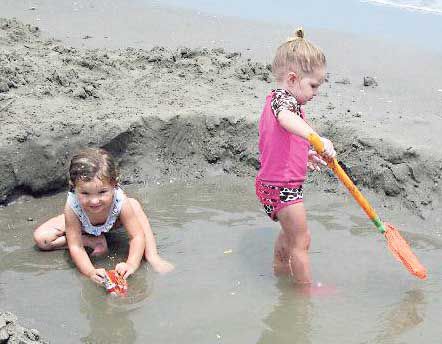
Houma Christian wants a turnaround in 2016
August 24, 2016
Murphy welcomes students, business dean to kick off 2016-17
August 24, 2016The closure of the popular beachfront at Elmer’s Island to vehicular traffic has local officials concerned about the impact on Grand Isle’s tourism outlook.
The Louisiana Department of Wildlife and Fisheries announced on Aug. 4 that Elmer’s Island would be closed to all visitors for almost two weeks due to construction related to Caminada Headland Beach and Dune Restoration project, with the west side of the beach set to open back up to foot traffic after Aug. 22. However, the DWF also announced vehicular traffic would be prohibited from the beach permanently.
The Coastal Protection and Restoration Authority is relying on two state laws, RS 49:214.5.8 and RS38.213, that prohibit driving on dunes and completed coastal restoration projects to enact the driving ban on Elmer’s Island. According to Wayne Keller, executive director of the Grand Isle Port Commission, the beachfront loses marketability by restricting vehicular traffic. Keller said he has heard from fishermen – both commercial and recreational – and local businesses such as marinas and hotels expressing fear concerning the restriction’s effects on their bottom line.
“The effect, as far as we’re concerned, is devastating,” Keller said. “Because Grand Isle, our mainstay is fishing and tourism, and it was an extremely popular spot because it was the only place in Louisiana you could drive on the beach and bring your barbecue pit or whatever. And now you have a considerable distance to walk; now it’s not very popular.”
The Caminada project, which includes Elmer’s Island, is an effort by the Coastal Protection and Restoration Authority to restore more than 13 miles and 800 acres of beach and dune habitat along the coastline. The project, costing more than $200 million, is the priciest the CPRA has done to date. It involves transporting sand from Ship Shoal, a borrow site 30 miles away in the Gulf of Mexico, to restore the habitat for wildlife and improve coastline protection from storm surge.
Because of the massive flooding disaster in Baton Rouge, CPRA officials were not available for comment on the closing. However, CPRA Spokesperson Chuck Perrodin offered an official statement from the agency explaining its stance on the closure. According to the CPRA, vehicular traffic presents a threat to the beach, and the restoration authority is required to protect its large investment in the island.
“While we understand this hampers the traditional use of this shoreline, the negative impacts vehicles can cause on beaches and dunes is well documented in the scientific literature. CPRA has taken these findings into consideration in balancing the use of these unique coastal areas,” the statement read.
Keller said during pre-construction meetings with various stakeholders, CPRA and DWF did not warn of any restrictions to access. He said Grand Isle officials were given no warning about the permanent closure of the beach, instead learning about it with the wider public. He said Grand Isle officials have had preliminary talks with state officials about changing the restrictions, but the state’s existing laws give strong support to the CPRA for the closures.
“There have been some ongoing discussions. We are stymied by this statute they found after the project started that we were not told about in advance,” Keller said.
Both the CPRA and Keller have been looking at methods to ease some of the pain on visitors and local businesses dependent on tourism. Keller said the town has not conducted any formal study on the permanent closure’s impact, but said locals have estimated the impact could amount to more than $1 million per year. The CPRA said it has plans to improve non-vehicular access to the beach, including making road improvements and adding parking areas and walking corridors on Elmer’s Island. However, the authority has not identified a situation where it can allow vehicular access.
Keller said he thinks there are workarounds the town could take to still allow vehicles on the beach without threatening the Caminada project. He said the CPRA could require all vehicles to stay close to the waterline, minimizing damage to dunes, bird nesting areas and vegetation. He also suggested using a main access point to the beach to keep people from getting stuck and protecting the dunes.
“I understand the ecological needs and environmental needs, but I think there’s some compromise that could be worked out that could be amicable to all situations here,” Keller said. •




